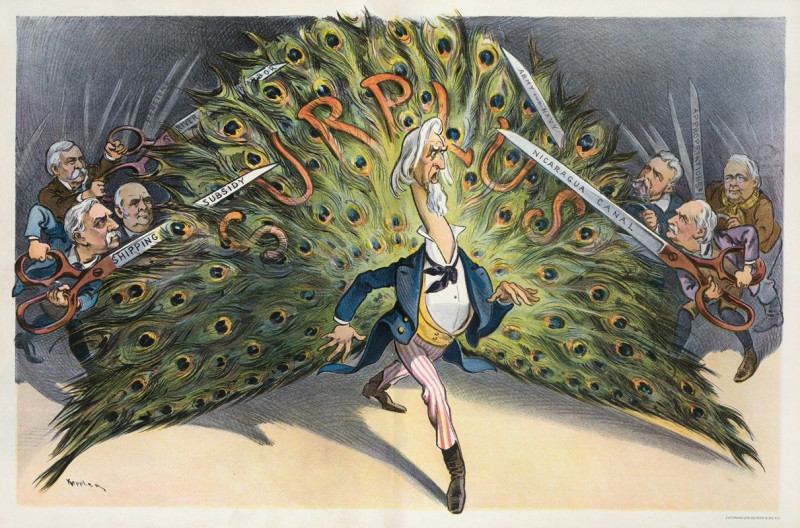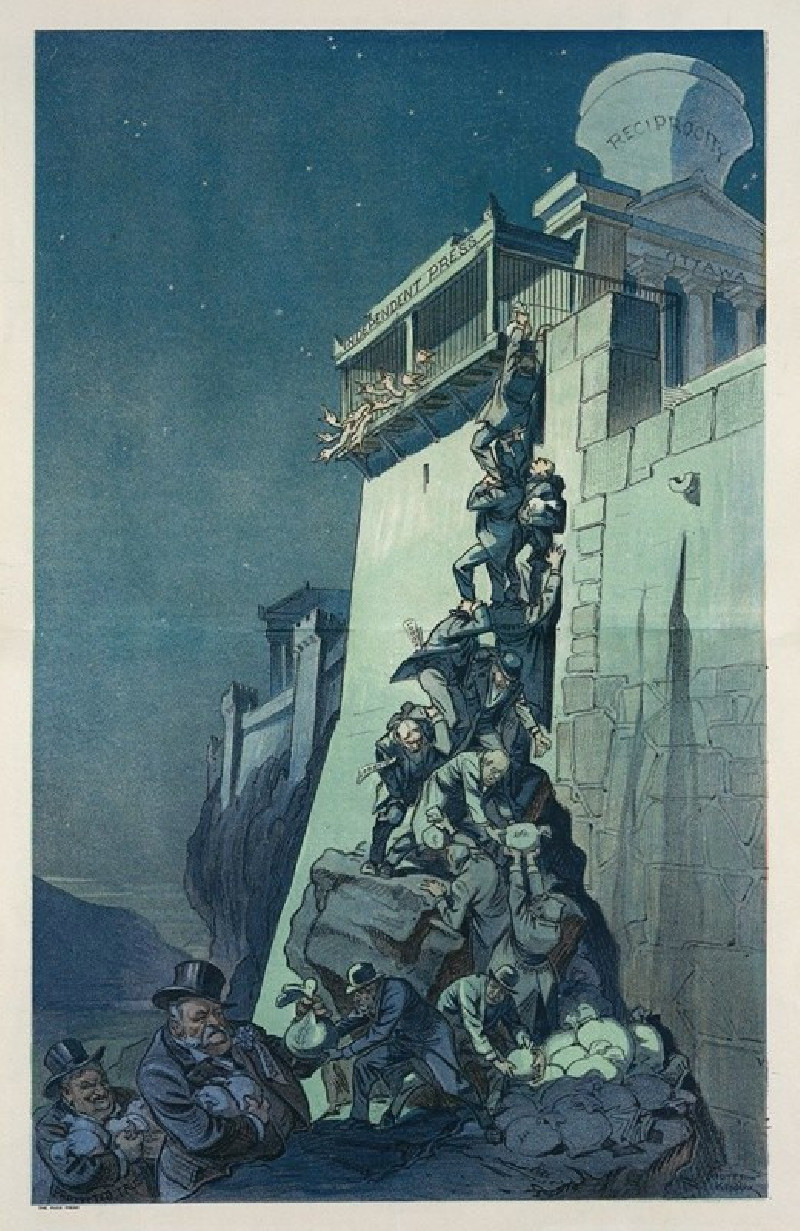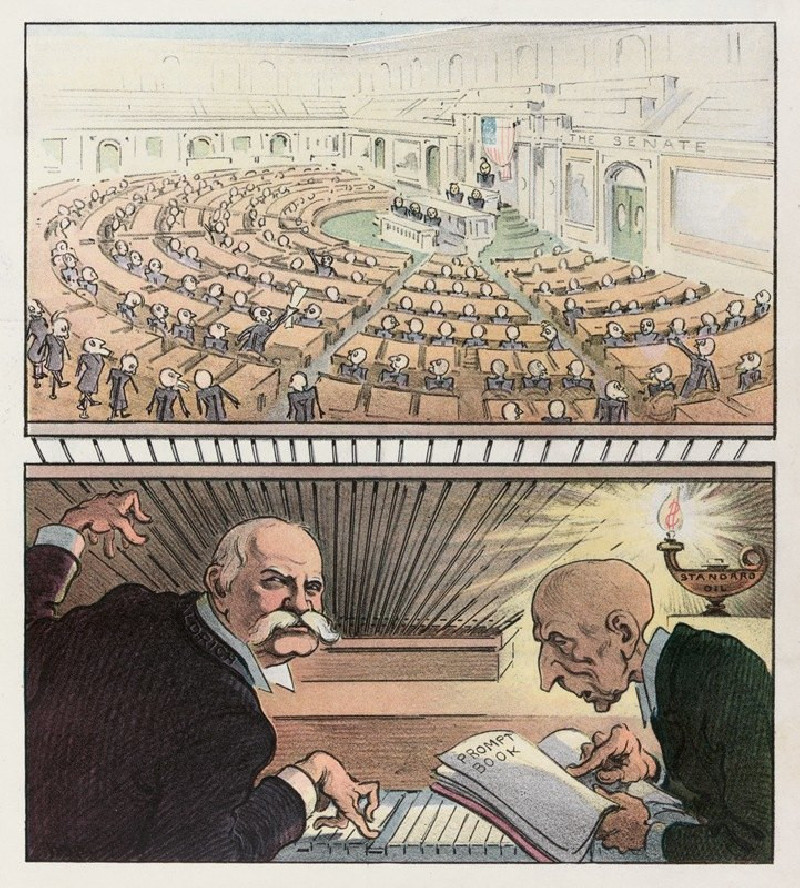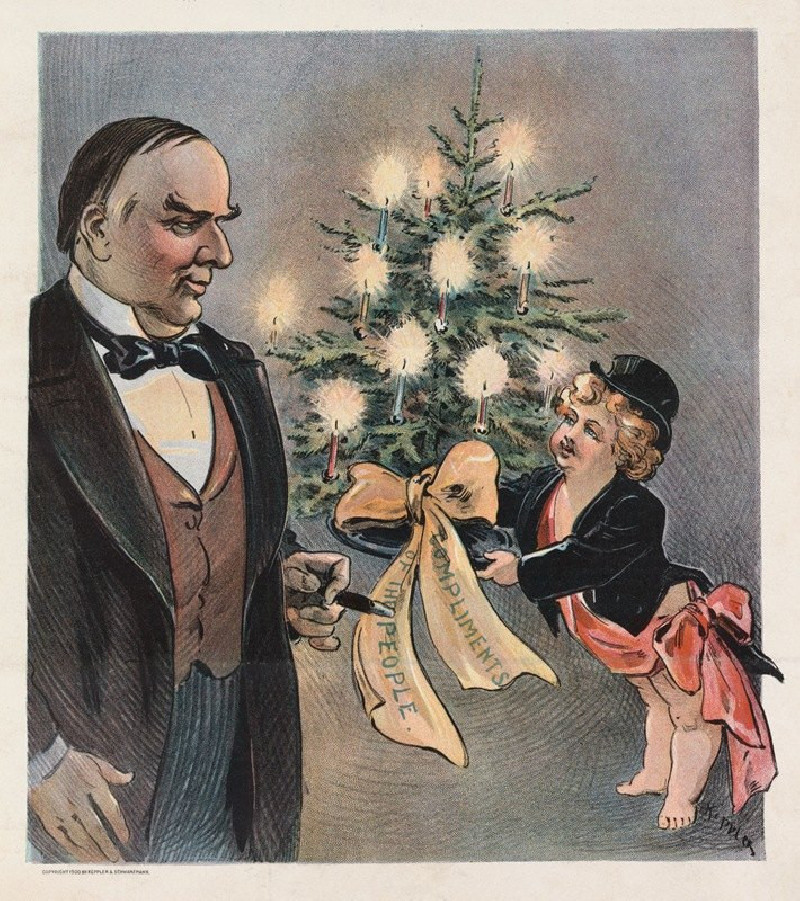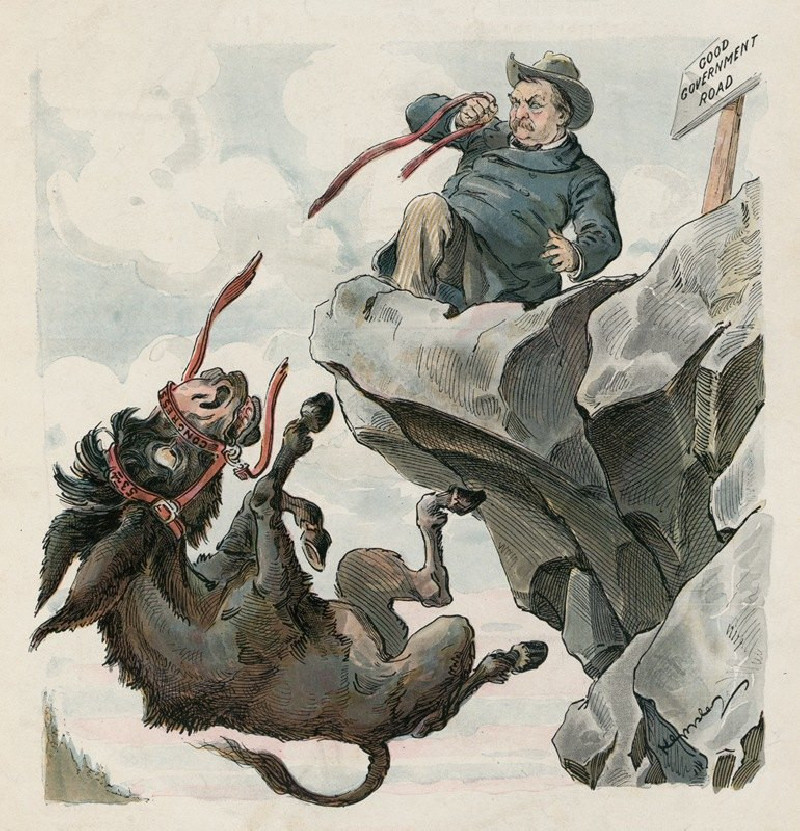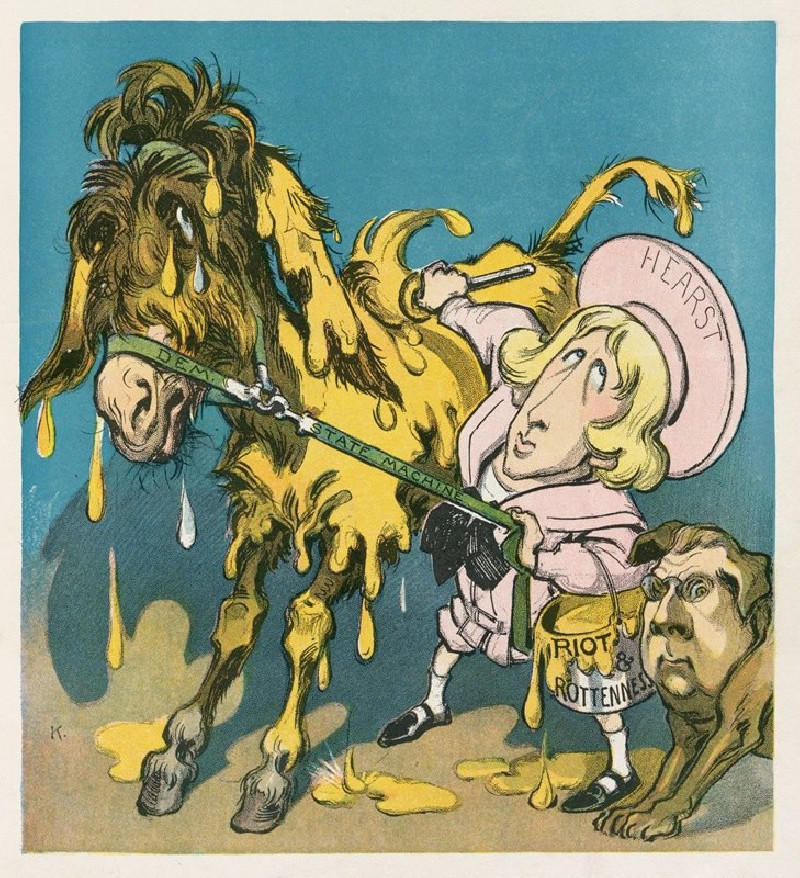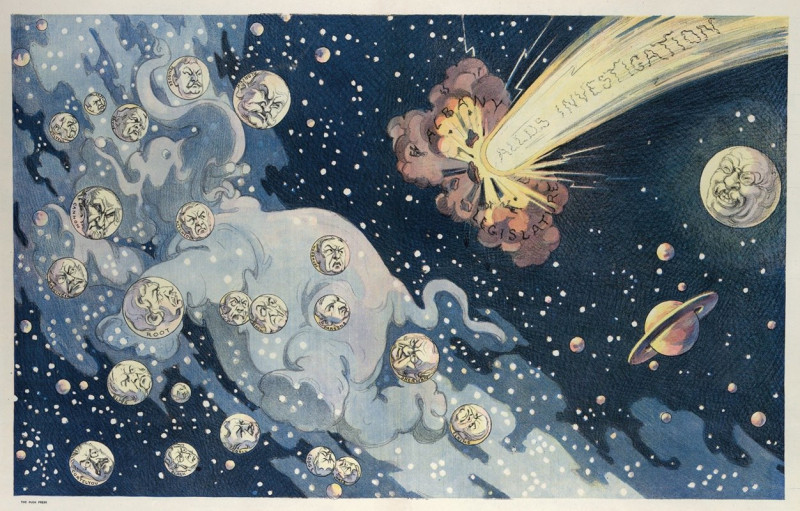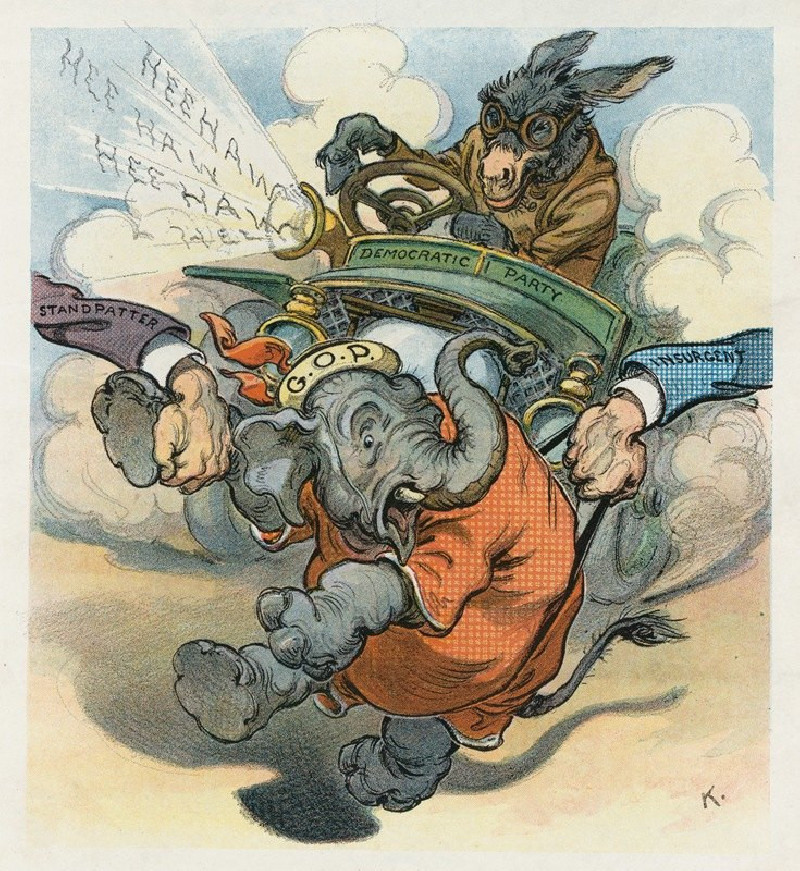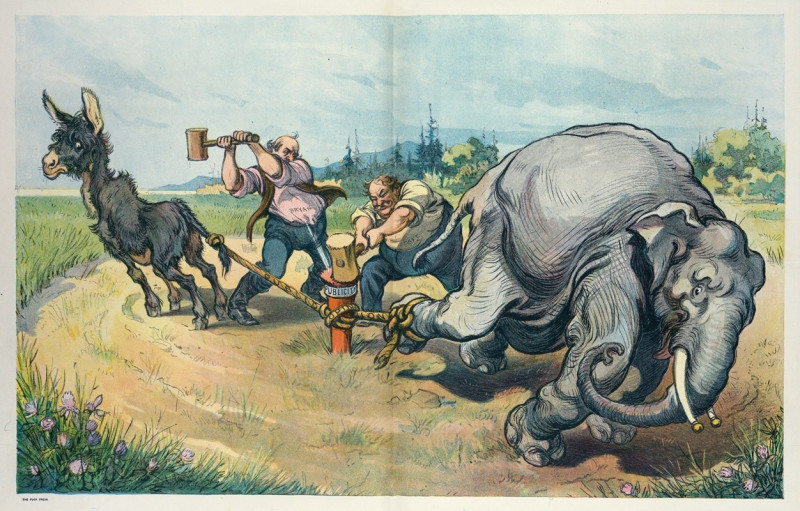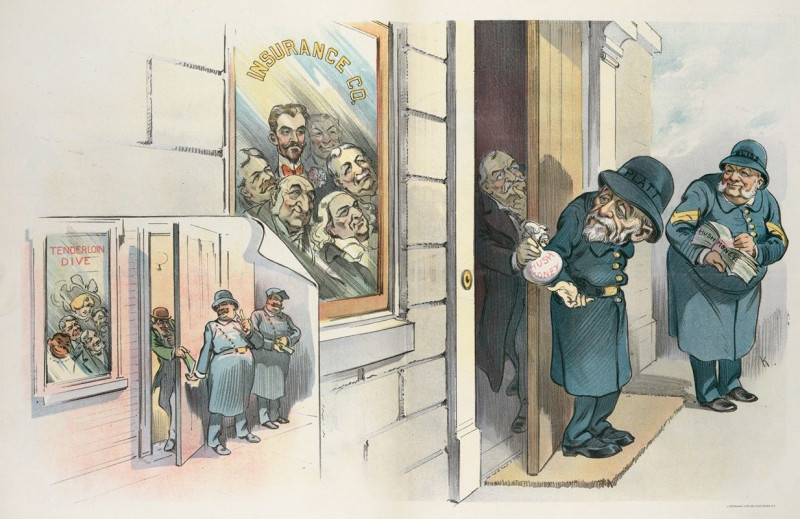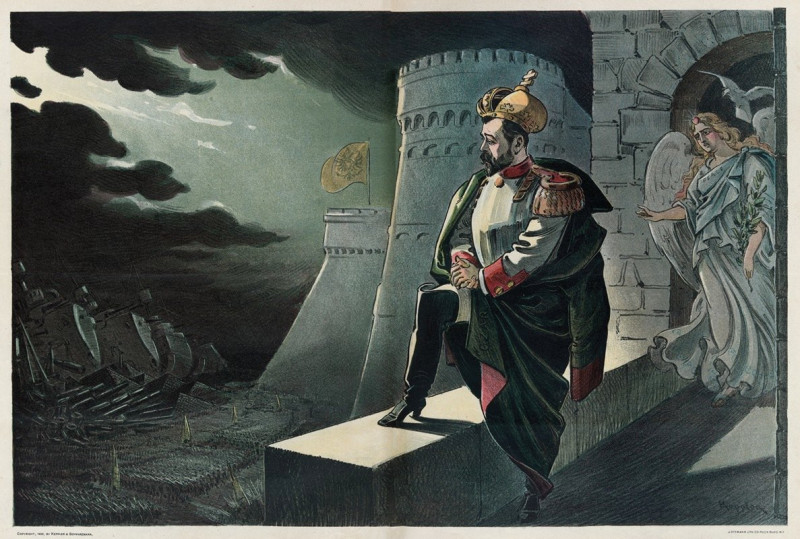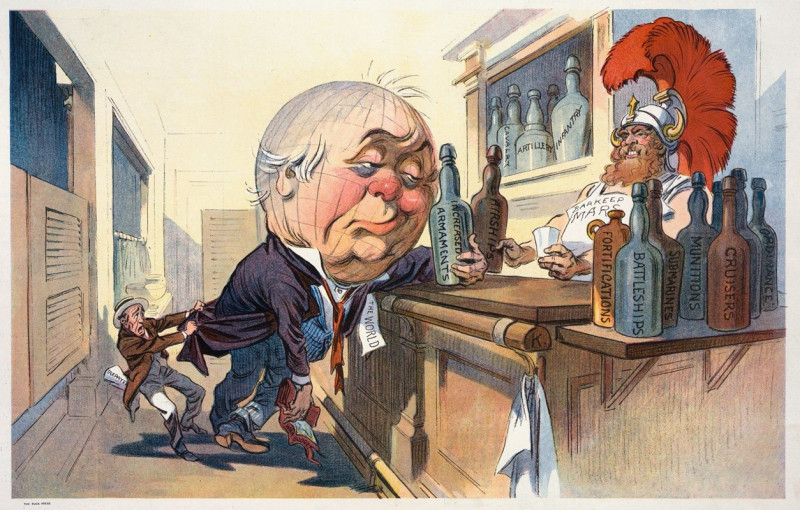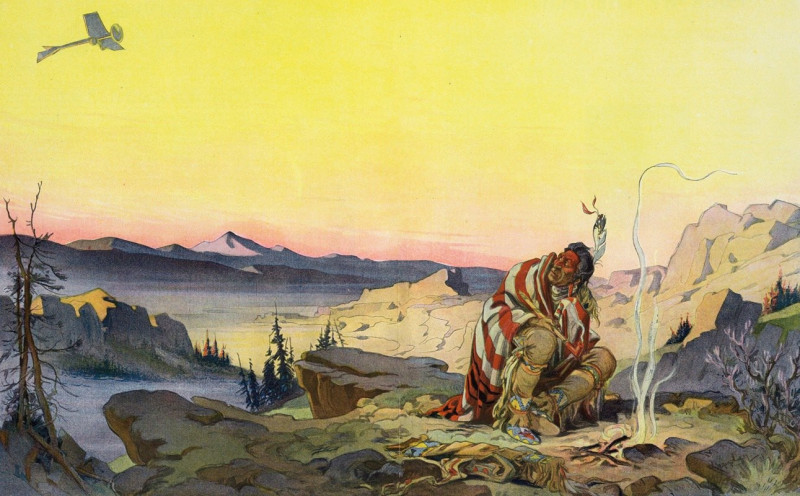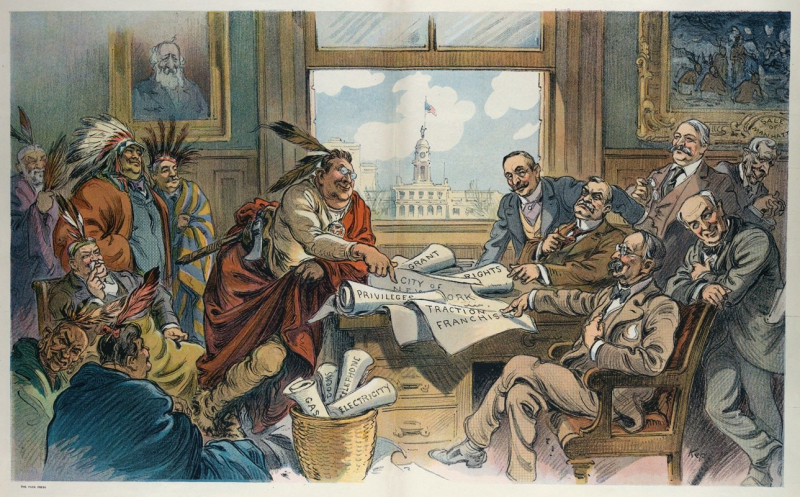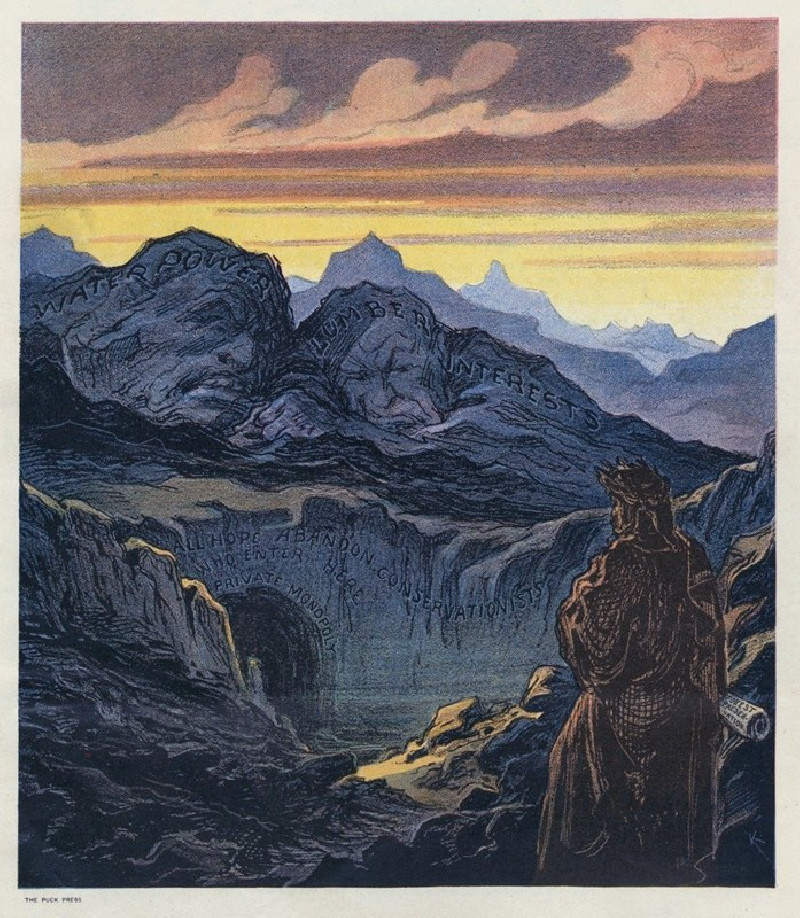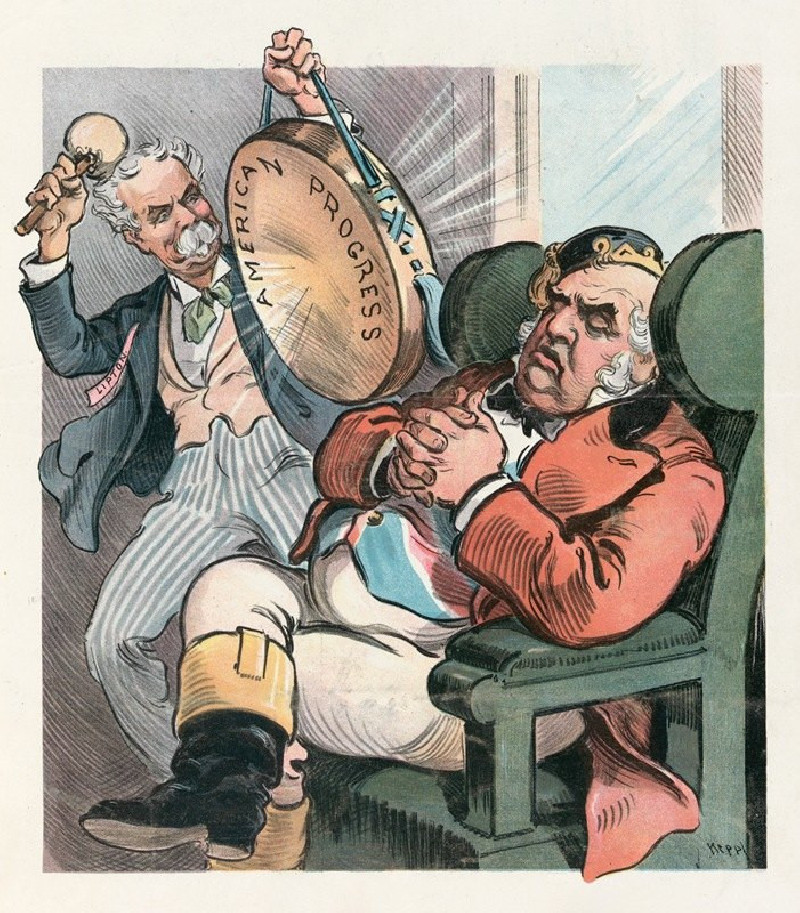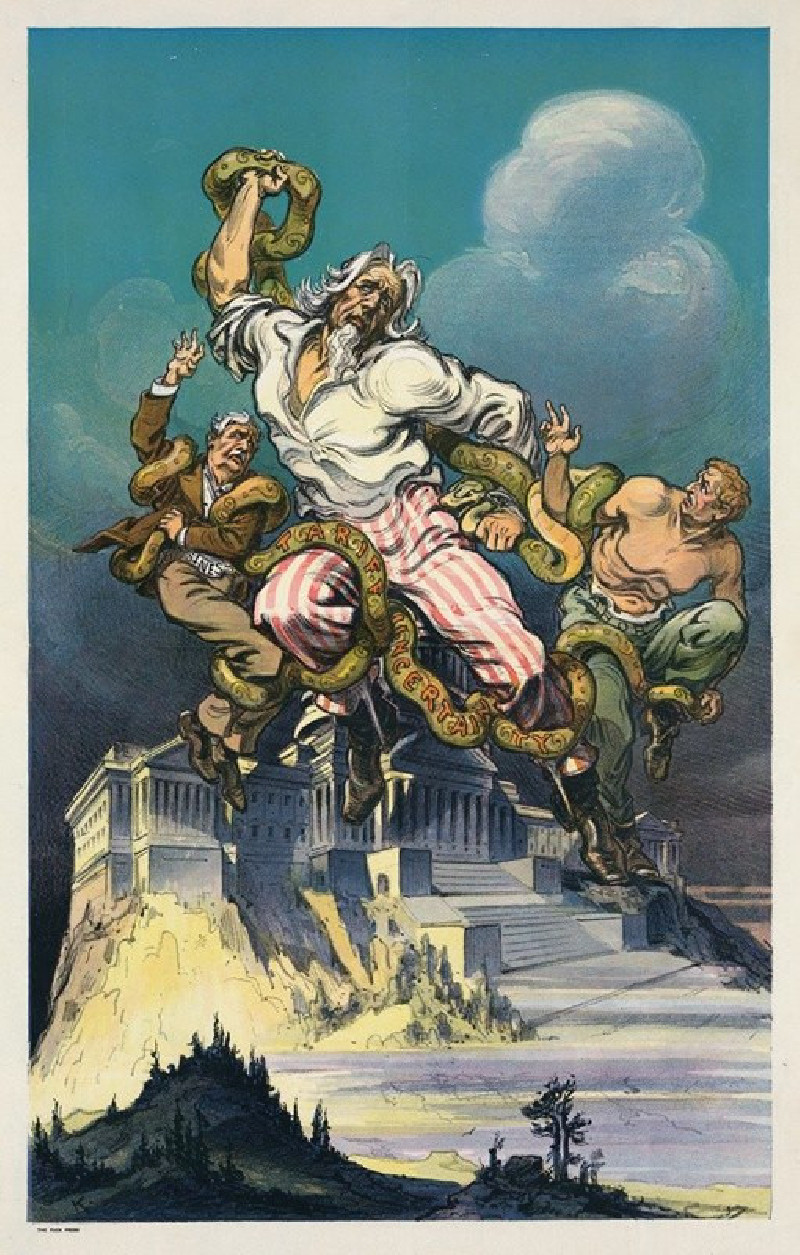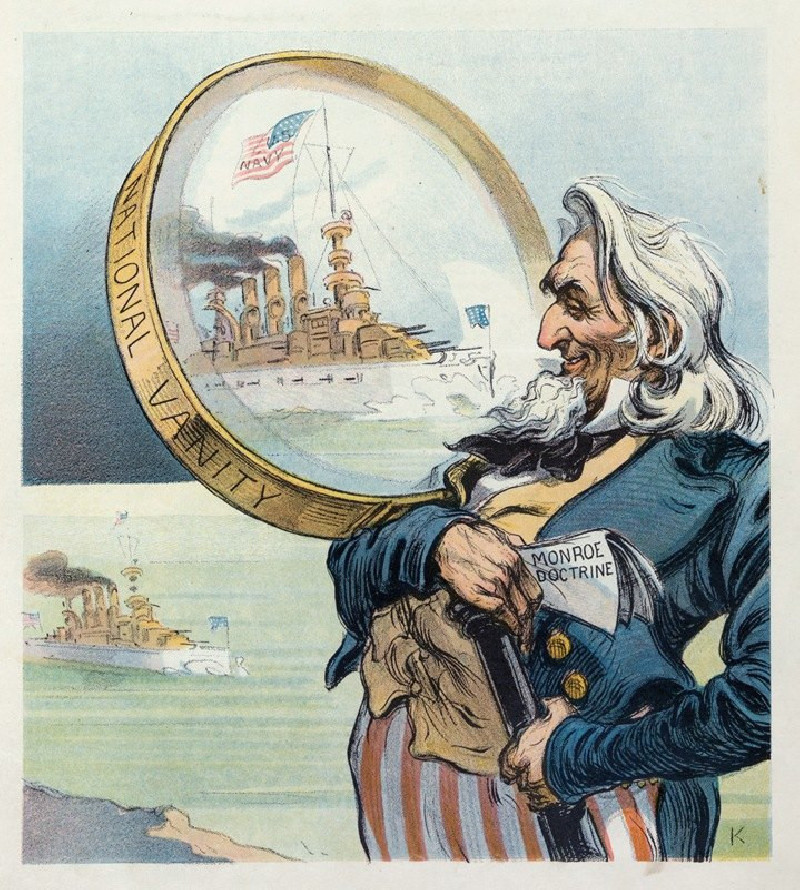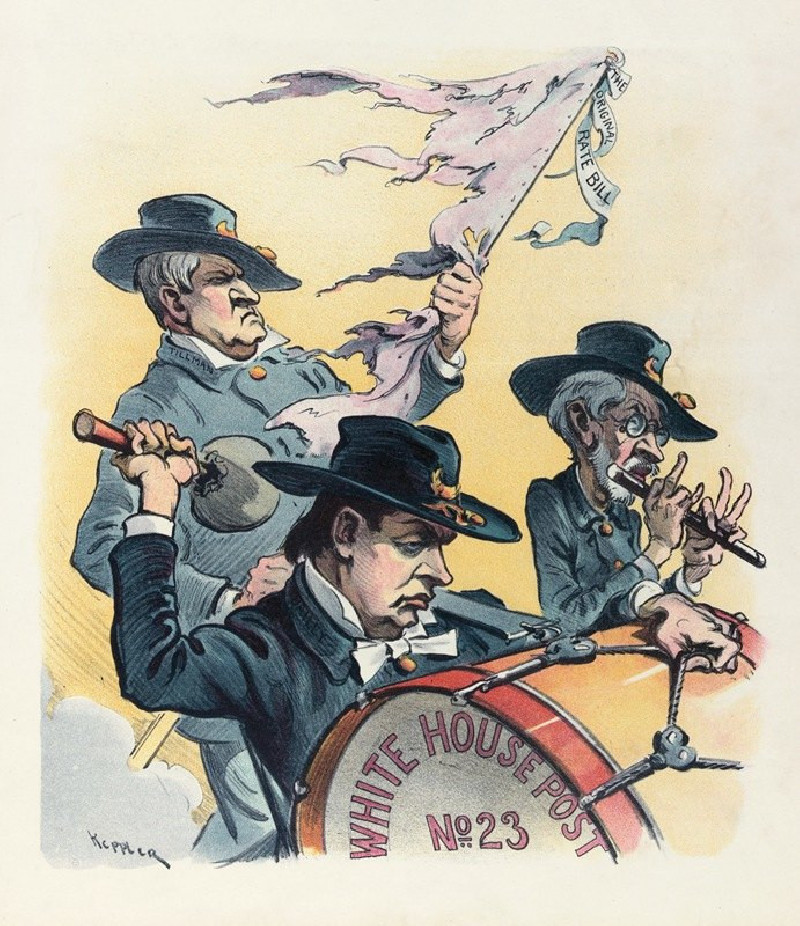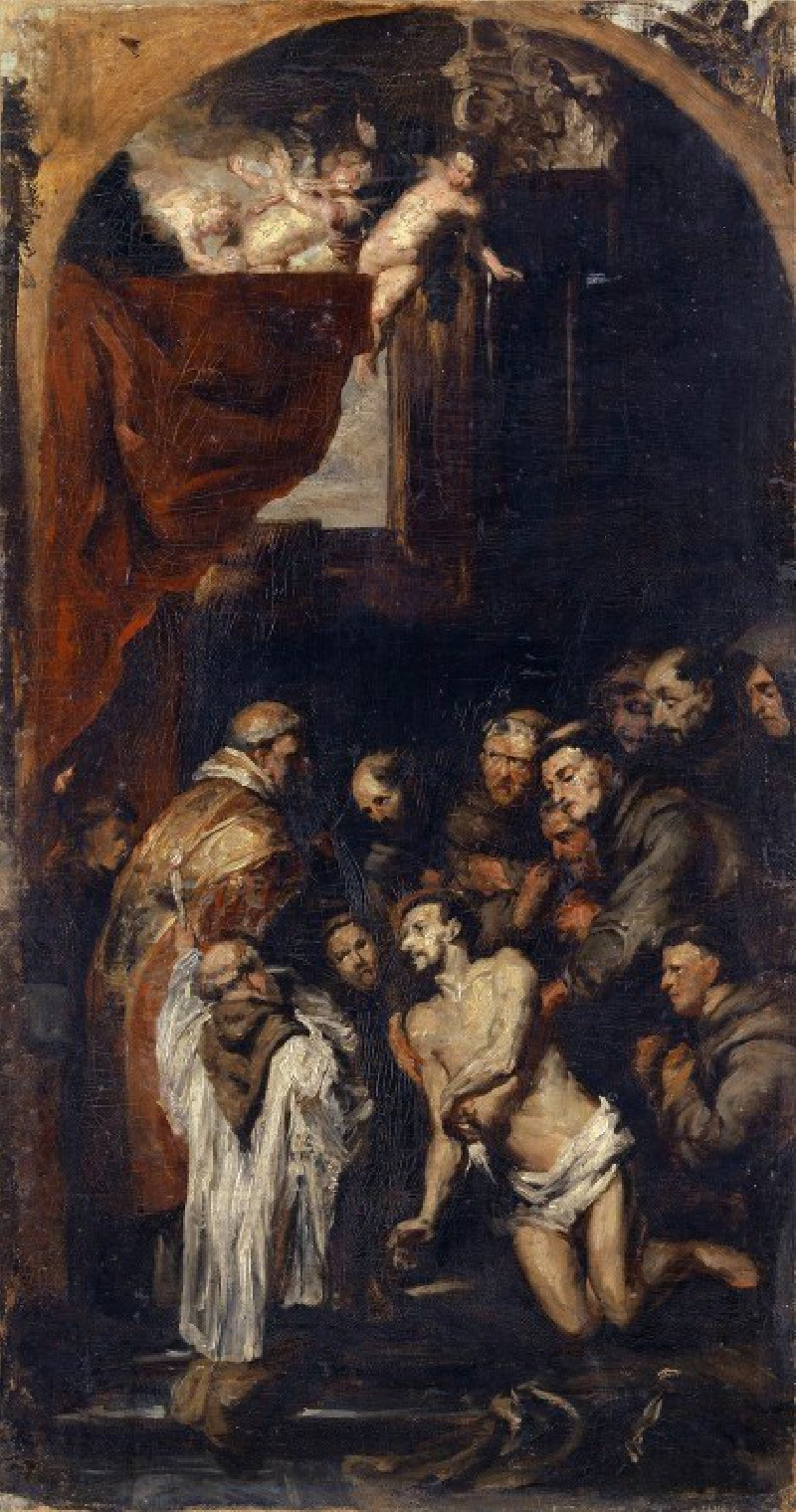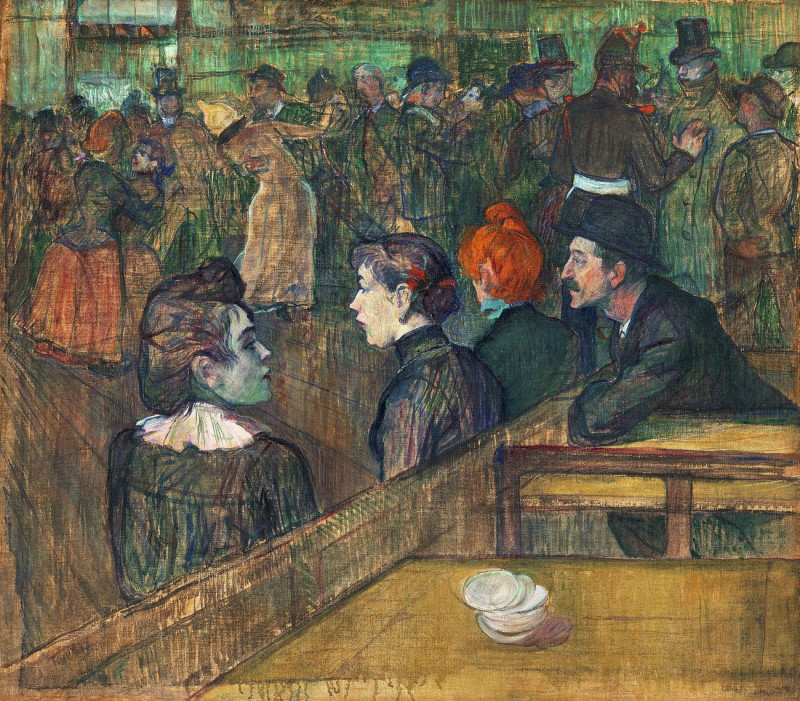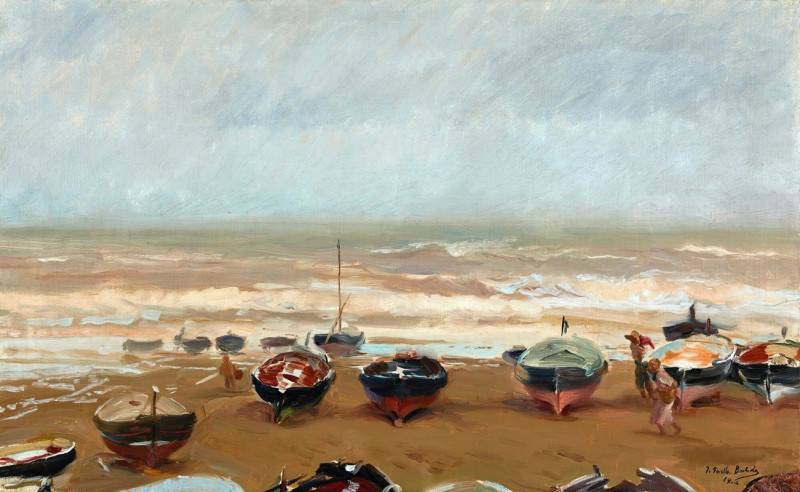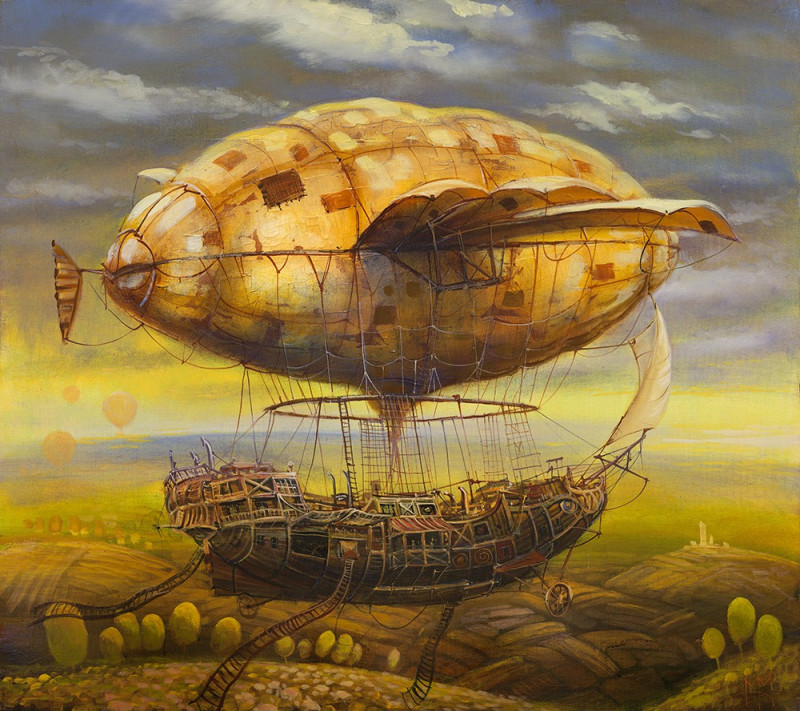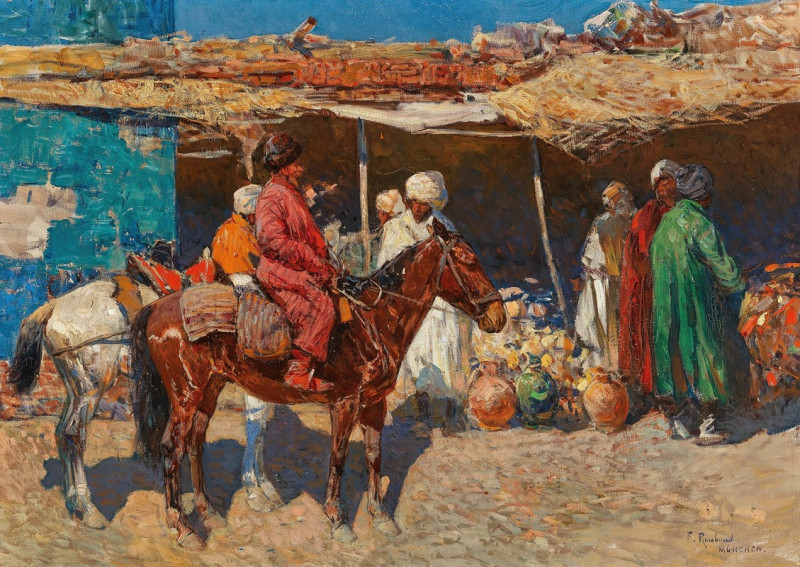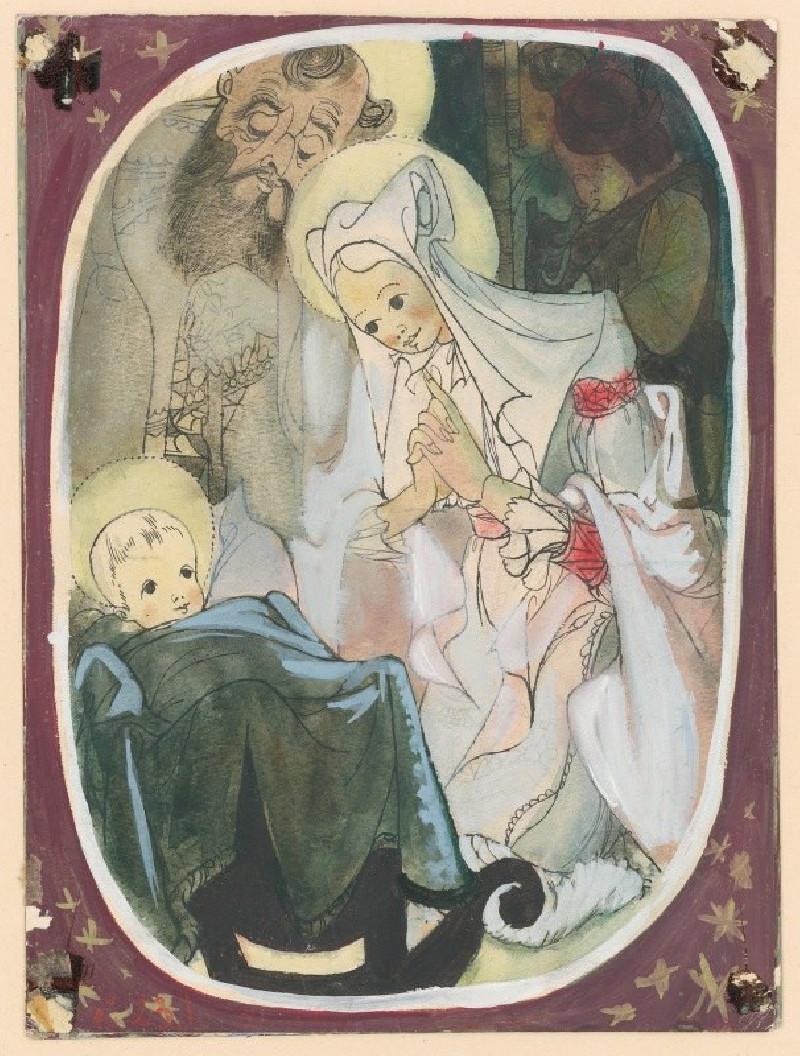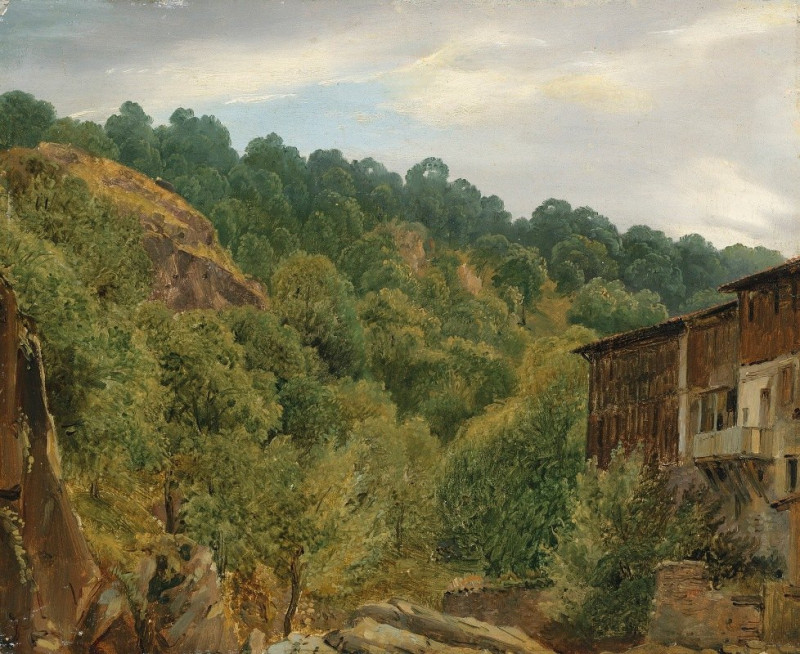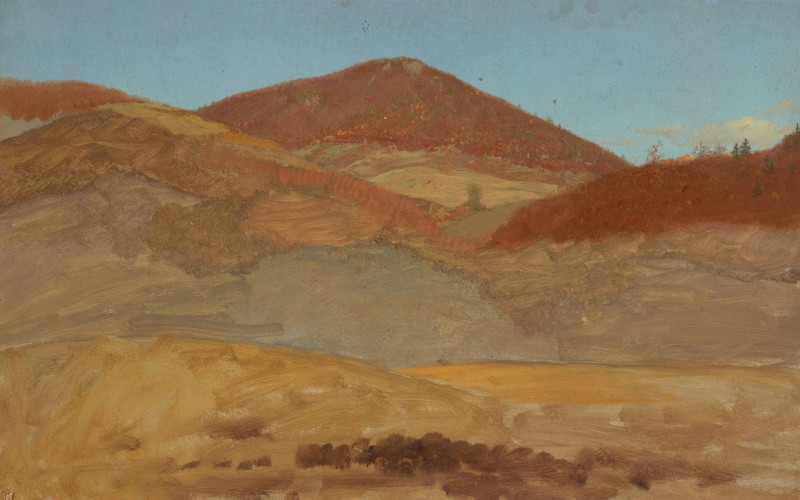A tempting tail (1902)
Technique: Giclée quality print
Recommended by our customers
More about this artwork
Welcome to our exploration of Udo Keppler's 1902 political cartoon titled "A Tempting Tail". This captivating work of art employs vivid imagery and satirical undertones to comment on the political climate of its time.The painting depicts a central figure, distinguished by his aged appearance and a grandiose peacock tail, evoking the notion of pride and display. The tail feathers are not merely ornamental; each is adorned with an eye labeled with influential political topics of the era, such as "RP", "Subsidy", "Shipping", and "Nicaragua Canal". These labels signify issues of significant political interest and debate, suggesting that they are alluring yet possibly deceptive or dangerous pursuits for the figure they adorn.In a dramatic interplay, various men wielding large scissors attempt to cut off parts of the peacock tail. These men likely represent politicians or powerful figures of the period, each striving to reshape or control the central issues according to their agendas. Their expressions range from earnest to aggressive, highlighting the contentious nature of the political endeavors.The artwork is not just a literal representation but a metaphorical critique of political maneuvering, depicting how tempting political gains can be pursued at the risk of personal and collective fallout. The use of vivid colors and dynamic composition adds to the impact of the message, making it both an artistic and a historical commentary."A Tempting Tail" is a mesmerizing piece that offers insight into the political dialogues of the early 20th century, all while showcasing Keppler's skill in blending artistry with social commentary.
Delivery
Returns
Udo J. Keppler, since 1894. known as Joseph Keppler, Jr., was an American political cartoonist, publisher, and Native American advocate. The son of cartoonist Joseph Keppler (1838–1894), who founded Puck magazine, the younger Keppler also contributed to cartoons, and after his father's death became co-owner of the magazine under the name Joseph Keppler. He was also a collector of Native American artifacts.

